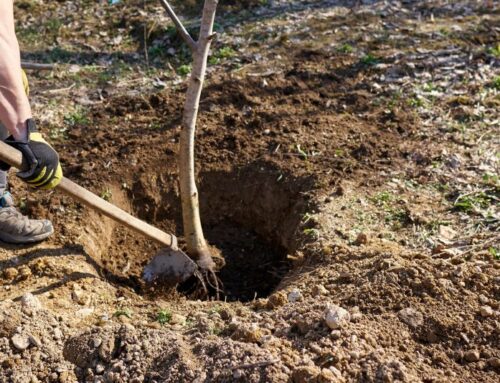Ever come across a cool tree only to—ouch!—be accidentally stabbed? Some trees come armed and adorned with sharp thorns. But why do they have them, and what’s the point of thorns? Although they can be painful, thorns have useful functions for trees—and possibly for us too. Learning about thorny tree species can help you decide whether to incorporate them into your landscape or steer clear to avoid any unexpected thorny encounters.
Why Do Some Trees Have Thorns?
Thorns are a tree’s natural defense mechanism against herbivores, preventing animals from feeding on their leaves, bark, or fruit. In some species, leaves are modified into thorns or spines to help conserve moisture by reducing wind exposure and limiting water loss. Additionally, thorns can help trees climb or sprawl over other vegetation for better sunlight access. Beyond their ecological roles, thorns can provide valuable human uses, from natural fencing to medicinal applications.
Common Trees with Thorns and Their Characteristics
If you live on the West Coast, you may have encountered thorny trees in urban environments. These trees have unique beauty and benefits but require careful placement and maintenance. Below are five common thorny tree species and their distinguishing characteristics.
Honey Locust (Gleditsia triacanthos)
The honey locust is a hardy, fast-growing tree with an open canopy, making it a popular shade tree in urban settings. While some cultivated varieties, such as ‘Shademaster’ and ‘Skyline,’ are thornless, the wild form is notorious for its long, branching thorns that can grow on the trunk and limbs. Honey locust trees produce small, fragrant flowers in spring and long, twisting seed pods in the fall, which provide food for wildlife.
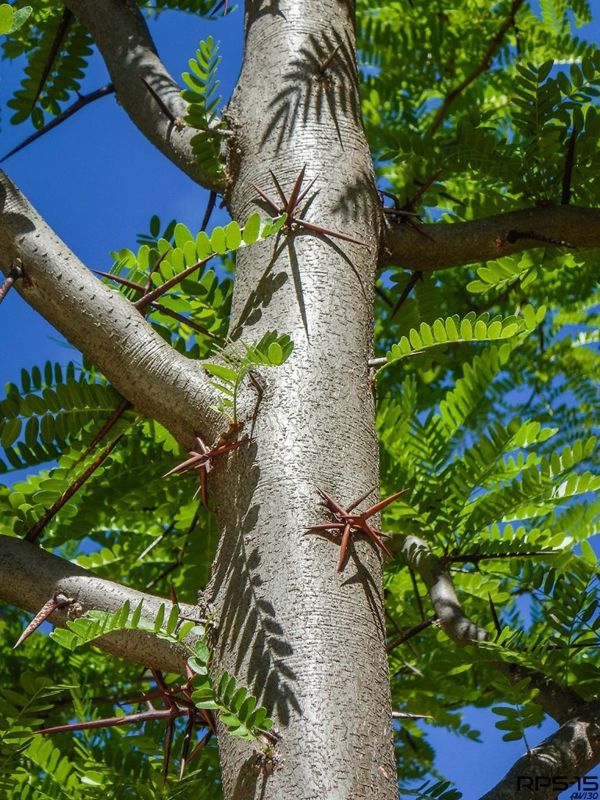
Key Characteristics:
- Thorned and thornless cultivars available
- Grows up to 70 feet tall
- Produces fragrant flowers and seed pods
- Adaptable to various soil conditions
Black Locust (Robinia pseudoacacia)
Black locust trees are valued for their hard, rot-resistant wood and fragrant white flowers, which attract pollinators. However, young branches bear sharp, paired spines, making them a concern in high-traffic areas. This species is fast-growing and often used for erosion control, but it can be invasive in certain regions due to its rapid suckering growth.
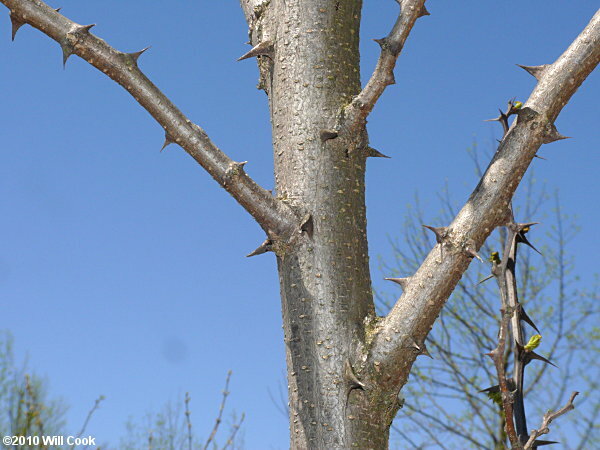
Key Characteristics:
- Reaches heights of 40-80 feet
- Produces fragrant, pea-like flowers
- Tolerant of poor soils and drought conditions
- Wood is highly durable and rot-resistant
Citrus (Citrus species)
Many citrus trees, including lemon, lime, and some orange varieties, feature small but sharp thorns on their branches. These thorns help protect the fruit from herbivores, though some cultivated varieties have been bred to be thornless. Despite their prickly nature, citrus trees remain popular for home gardens due to their fragrant blossoms and delicious fruit.
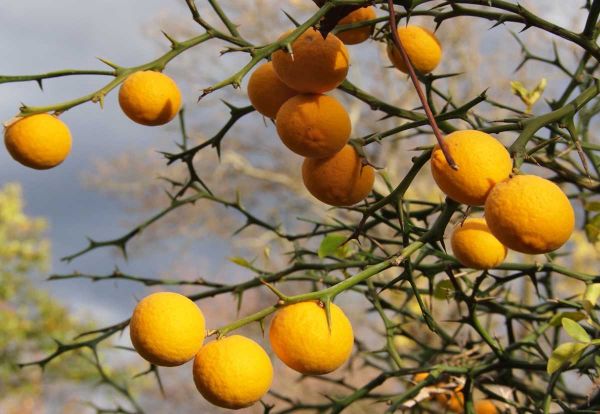
Key Characteristics:
- Compact size, ideal for urban landscapes
- Produces fragrant flowers and edible fruit
- Some varieties have thorns, while others are thornless
- Requires well-draining soil and full sun
Silk Floss Tree (Ceiba speciosa)
A striking ornamental tree, the silk floss tree is best known for its thick, spiky trunk and showy pink flowers. Native to South America, this tree thrives in warm climates and can be seen in urban parks and streetscapes. Its sharp, conical thorns serve as a defense against climbing animals and help conserve moisture.
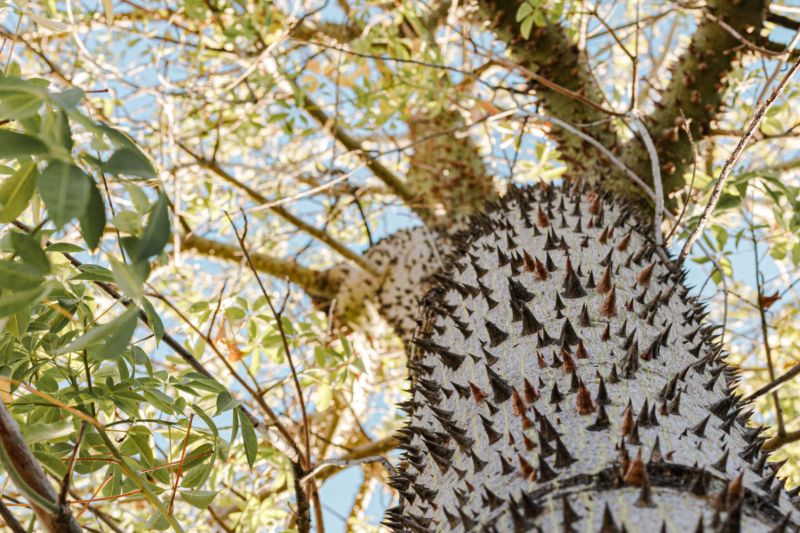
Key Characteristics:
- Grows up to 50 feet tall
- Features a spiny, bottle-shaped trunk
- Produces large, pink, hibiscus-like flowers
- Drought-tolerant once established
Blue Palo Verde (Parkinsonia florida)
Native to desert regions, the blue palo verde is a distinctive tree with green bark and a fine-textured canopy. Its small, sharp thorns protect it from browsing animals while its deep roots help it survive arid conditions. This tree is an excellent choice for xeriscaping and adds year-round visual interest with its bright yellow spring flowers.
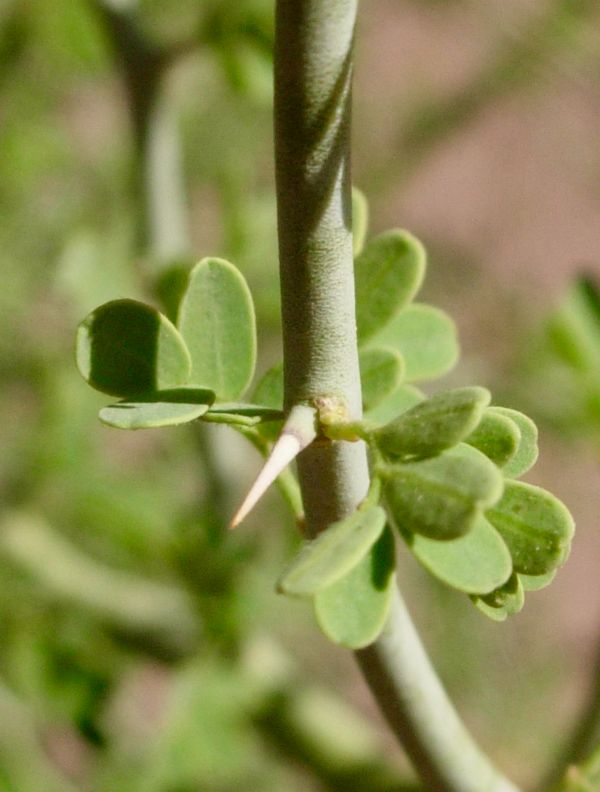
Key Characteristics:
- Reaches 20-40 feet in height
- Green bark aids in photosynthesis
- Covered in small, sharp thorns
- Drought-tolerant and ideal for arid landscapes
Uses of Thorny Trees in Landscaping and Industry
Thorny trees offer a variety of benefits beyond defending the tree itself. Many species are used in landscaping for:
- Natural fencing: Trees like black locust and honey locust create impenetrable barriers, providing privacy and security.
- Erosion control: Fast-growing species such as black locust help stabilize soil in erosion-prone areas.
- Wildlife habitat: Thorny trees provide shelter and food for birds and pollinators.
- Urban shading: Trees like the honey locust offer dappled shade, reducing heat buildup in urban environments.
- Wood and fiber production: Black locust wood is prized for its durability, while silk floss tree fibers are used in textile production.
Are Trees with Thorns Safe for Home Gardens?
While thorny trees can be an asset, carefully consider if and where to plant them in landscapes. Their sharp spines can pose risks to children, pets, and high-traffic areas. Proper placement, pruning, and maintenance are essential to safely enjoy these trees. Consider hiring professional arborists to help with:
- Tree trimming and pruning: Safely trimming thorny branches to reduce hazards.
- Tree planting and transplanting: Recommending the best locations to plant thorny trees to avoid unwanted encounters.
- Tree removal: Assisting with the safe removal of trees if necessary.
Conclusion
Thorny trees can provide unique benefits but require proper planning and maintenance to ensure safety. Need help selecting, maintaining, or removing a thorny tree? Contact A Plus Tree today!


